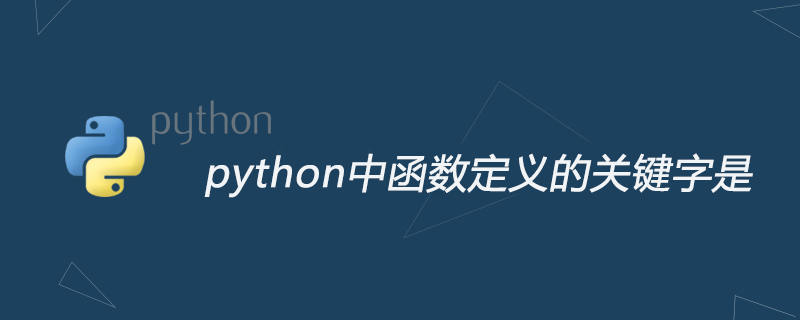Home >Backend Development >Python Tutorial >The keywords for function definition in python are
The keywords for function definition in python are
- (*-*)浩Original
- 2019-07-25 13:47:5413479browse
If we use code to implement a small function, but want to reuse it in the program code, we cannot paste the code everywhere in the code, because doing so violates the DRY principle in software engineering. Python provides function functions, which can abstract some of our functions into a function to facilitate program calls, or provide it for use by other modules.

# Functions are organized, reusable code segments used to implement a single or related function. (Recommended learning: Python video tutorial)
Function can improve the modularity of the application and the reuse rate of the code.
Python uses the def keyword to start the function definition, followed by the function name, the inside of the brackets are the parameters of the function, and the inside is the specific function implementation code of the function. If you want the function If there is a return value, return is used in the logic code in expressions.
def function_name(parameters):<br> expressions<br>
Example:
def function():<br> print('This is a function')<br> a = 1+2 <br> print(a)<br>
Above we defined a function named function. The function does not accept parameters, so the inside of the brackets is empty, followed by the function function code.
If you execute the script, you will find that there is no output because we only defined the function and did not execute the function. At this time, we enter the function call function() in the Python command prompt. Note that the parentheses in the function call cannot be omitted.
Then the function code inside the function will be executed, and the output result is:
This is a function<br>3<br>
For more Python-related technical articles, please visit the Python Tutorial column to learn!
The above is the detailed content of The keywords for function definition in python are. For more information, please follow other related articles on the PHP Chinese website!

